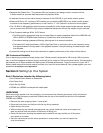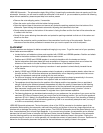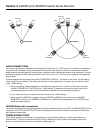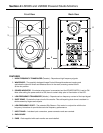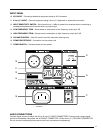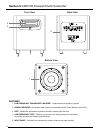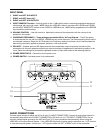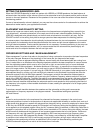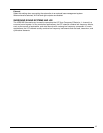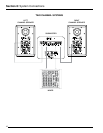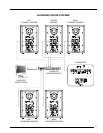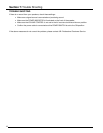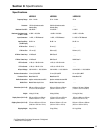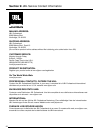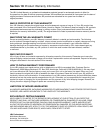
14
SETTING THE SUBWOOFER LEVEL
When the LSR310S Subwoofer is used in a system with LSR305 or LSR308 speakers, the ideal balance is
achieved when the position of the volume control on the subwoofer is set to the same position as the volume
control on the main speakers. Placement of the speakers in the room can affect the amount of bass heard at
the listening position.
If more or less subwoofer volume is desired, you may use the volume control on the subwoofer to achieve the
balance that works best for your application and taste.
PLACEMENT AND POLARITY SETTING
Because the human ear cannot easily recognize where low frequencies are originating (they are said to be
“non-directional”), subwoofer placement is not nearly as critical as main channel speaker positioning. The
LSR310S is designed to be placed directly on the oor and not elevated or mounted in any way. Set the
POLARITY switch to the setting that yields a stronger perceived bass response at the listening position.
In a stereo system, the subwoofer should optimally be placed between the two main speakers. In a surround
sound system, the subwoofer should be placed between the center and left channel speakers or the center
and right channel speakers. Precise central placement is not necessary. Centered positioning in the room can
sometimes cause unwanted cancellation, so it is recommended that the subwoofer be placed slightly off-
center and not at the midpoint between the left and right walls.
CROSSOVER SETTINGS AND “BASS MANAGEMENT”
“Bass management” is a term that refers to the practice of using a subwoofer to reproduce the bass frequencies
of the main channels. Because of the physiology of the human ear, low frequencies are largely
non-directional. Given an adequate listening distance, we can’t easily tell where bass signals are coming from.
Thus, it makes little or no difference to the listening experience whether the bass component in a sound comes
from the originating speaker (which may be off to your left or right, or even behind you) or from a dedicated
subwoofer which is better equipped – and better positioned in the room – to reproduce low frequencies than
even a full-range monitor. For that reason, you may want to use an LSR310S subwoofer to reproduce all the
bass frequencies in your system. If you are using an LSR310S Subwoofer in your system, bass management is
accomplished simply by routing your Left and Right mix channels to the Subwoofer inputs and then from the
subwoofer outputs to the Left and Right speakers. The frequency at which the subwoofer divides signals to
the sub and the left and right speakers can be set using the Crossover Frequency selector switch on the input
panel of the LSR310S Subwoofer. The 80Hz lter setting is recommended when the goal is a full range reference
monitor system that accurately portrays content below the cut-off of the main speakers. The 80 Hz crossover
provides a smooth transition and between the subwoofer and the main speakers, while optimizing the blend of
low frequency in the system, without audible localization of bass, creating the perception of a full range system
with no subwoofer.
To produce a smooth transition between the speakers and the subwoofer and the goal is an accurate
representation of frequency response in the program material. Two additional settings are provided:
XLF and External.
XLF
A trend in music production is the requirement for enhanced low frequency response in the control room.
Artists and producers involved in the production of dance music appreciate the ability to audition their work as it
might sound when played on a system with enhanced low frequency tuning, commonly employed in dance clubs.
A JBL rst, the LSR310S includes a special XLF Extended Low Frequency setting that emulates the response
curve applied to a club playback system. When the XLF crossover setting is selected, a 120Hz High Pass Filter is
engaged in conjunction with a 10 dB boost at 60Hz with a bandwidth of 0.5 octaves. Using this setting, the bass
output more than doubles and the character of low frequency approximates that of a club system. Continuous
low frequency with very high peak SPL is made possible by JBL’s new long excursion low frequency driver
working in concert with JBL’s patented Slip Stream™ Port design, and powered by a 200 Watt class D amplier.
A protective circuit allows the 310S to continuously produce low frequency at high output without failure.
In situations where positioning will allow, an additional 6 dB of output can be achieved by positioning the
LSR310S subwoofer adjacent to a wall or at the intersection of two walls.



